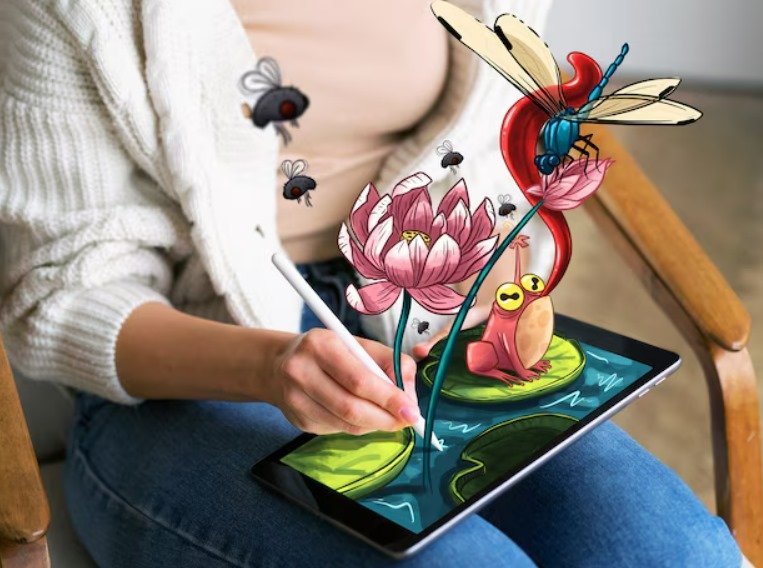Art has grown beyond traditional mediums in the present digital age, inspiring an emerging class of creators to have fun with digital mediums for creative expression. The use of digital media offers up an array of imaginative potential for everybody, regardless of experience level. You will learn about the fundamentals of digital art, where to get began, and some artistic motivation from this publication.
What is Digital Art?
Any creative work produced with digital tools will be referred to as digital art. It involves multiple distinct methods, including vector illustration, digital art, and 3D modeling. A fascinating site in this field is digital art ankinsart, that showcases an array of techniques and styles. Digital art is easier to edit, share, and copy than conventional artistic forms. It is appealing because it is available.
Getting Started with Digital Art
Choose Your Tools
One of the first steps in your digital art journey is selecting the right tools. Here are some common options:
- Hardware:
- Graphics Tablets: These devices, such as those made by Wacom or Huion, allow you to draw directly onto a surface that connects to your computer. This mimics the experience of drawing on paper.
- Touchscreen Laptops or Tablets: Devices like the iPad Pro or Microsoft Surface can be great for creating art on the go.
- Software:
- Adobe Photoshop: A powerful tool for digital painting and photo editing. It’s widely used in the industry but comes with a subscription cost.
- Procreate: A favorite among illustrators, especially on the iPad. It’s user-friendly and packed with features.
- Krita: A free, open-source painting program that’s great for beginners and offers many brushes and tools.
- Online Platforms:
- If you’re not ready to invest in software, consider online platforms like Canva or Pixlr. These tools provide basic features for creating graphics and are a good starting point.
Learn the Basics
Before diving into your first project, familiarize yourself with some fundamental concepts:
- Layers: Digital art allows you to work in layers, enabling you to separate different elements of your artwork. This makes it easier to edit and adjust parts without affecting the entire piece.
- Brushes and Textures: Different brushes can create varied effects, from smooth lines to textured surfaces. Experiment with these to find your style.
- Color Theory: Understanding how colors interact can significantly enhance your artwork. Tools like color wheels and palettes can help you choose harmonious color combinations.
Practice, Practice, Practice
Digital art grows stronger with execution, as with any other artistic ability. To get comfortable with your tools, begin by recreating fundamental components or circumstances. Enhance the level of detail of your work progressively to challenge oneself. If you’re looking to gain fresh abilities, consider attending online tutorials. Several tools catered towards beginners can be available on websites like Skillshare and YouTube.
Exploring Styles and Techniques
Digital art encompasses a variety of styles. Here are a few popular ones to explore:
- Digital Painting: This style mimics traditional painting techniques. Use brushes to create textures and blend colors to achieve depth and realism.
- Vector Art: Created using mathematical equations, vector art is scalable without losing quality. Tools like Adobe Illustrator or Inkscape are ideal for this style.
- 3D Art: Programs like Blender allow you to create three-dimensional models and environments. This style is particularly popular in game design and animation.
- Mixed Media: Combine traditional and digital techniques by scanning hand-drawn images and enhancing them digitally. This can add a unique touch to your artwork.
Join the Community
Holding conversations alongside other creative people can be very helpful. Engage in networking groups, chat rooms, or websites like Art Station and Deviant Art. These groups give criticism, assistance, and motivation. Don’t hesitate to share with others; helpful feedback could assist you develop as a creator.
Using Digital Tools Creatively
One exciting aspect of digital art is the variety of tools available to enhance your creativity. For instance, if you’re interested in creating intricate designs, you might explore using a string art generator. This tool allows you to create stunning string art patterns digitally, which can serve as inspiration or be integrated into your artwork. Check out various generators available online to find one that suits your style.
Additionally, consider exploring platforms like ankinsart, which focus on community-driven art projects and tutorials. These resources can provide inspiration and guidance as you hone your skills.
Tips for Success
- Set Goals: Define what you want to achieve with your digital art. Setting small, manageable goals can keep you motivated.
- Create Regularly: Establish a routine for creating art. Consistency is key to improvement.
- Don’t Fear Mistakes: Embrace the learning process. Every mistake is an opportunity to grow and discover new techniques.
- Stay Inspired: Follow artists whose work you admire. Study their techniques and apply them to your own style.
- Take Breaks: Stepping away from your work can provide fresh perspectives and prevent burnout.
Conclusion
Digital art is a creative field that everyone, no matter what level they are at, can enter and explore the aspects of arts that they like. If you have the required equipment, enough self-discipline, and a community that can support you, you can become skilled, and such a skill will help you express your art in a way no one else
You Can Read Also: The Digital Age: Navigating the Future of Technology


